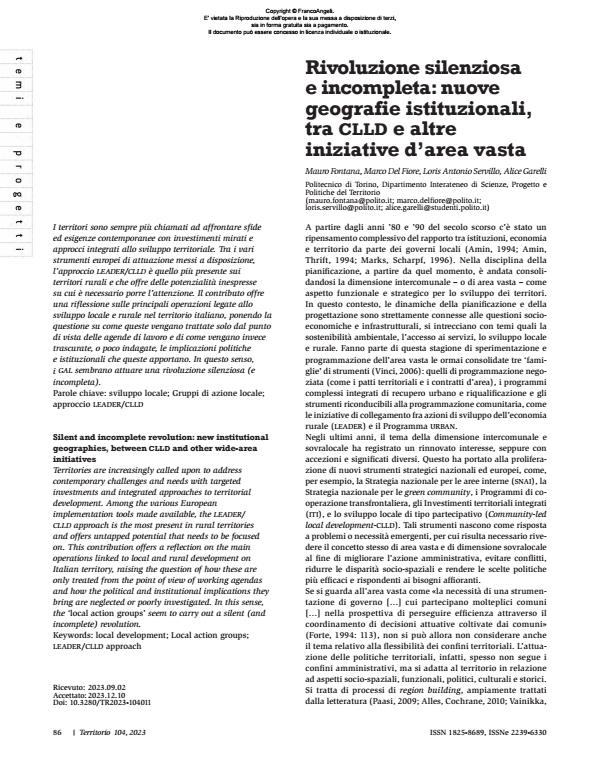Silent and incomplete revolution: new institutional geographies, between clld and other wide-area initiatives
Journal title TERRITORIO
Author/s Mauro Fontana, Marco Del Fiore, Loris Antonio Servillo, Alice Garelli
Publishing Year 2024 Issue 2023/104
Language Italian Pages 7 P. 86-92 File size 325 KB
DOI 10.3280/TR2023-104011
DOI is like a bar code for intellectual property: to have more infomation
click here
Below, you can see the article first page
If you want to buy this article in PDF format, you can do it, following the instructions to buy download credits

FrancoAngeli is member of Publishers International Linking Association, Inc (PILA), a not-for-profit association which run the CrossRef service enabling links to and from online scholarly content.
Territories are increasingly called upon to address contemporary challenges and needs with targeted investments and integrated approaches to territorial development. Among the various European implementation tools made available, the leader/ clld approach is the most present in rural territories and offers untapped potential that needs to be focused on. This contribution offers a reflection on the main operations linked to local and rural development on Italian territory, raising the question of how these are only treated from the point of view of working agendas and how the political and institutional implications they bring are neglected or poorly investigated. In this sense, the ‘local action groups’ seem to carry out a silent (and incomplete) revolution.
Keywords: local development; Local action groups; leader/clld approach
- Small and medium-sized towns in Italy: policy gaps and institutional challenges Marco Del Fiore, Loris Antonio Servillo, in European Planning Studies /2025 pp.578
DOI: 10.1080/09654313.2025.2468927
Mauro Fontana, Marco Del Fiore, Loris Antonio Servillo, Alice Garelli, Rivoluzione silenziosa e incompleta: nuove geografie istituzionali, tra clld e altre iniziative d’area vasta in "TERRITORIO" 104/2023, pp 86-92, DOI: 10.3280/TR2023-104011